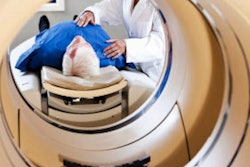Dear Molecular Imaging Insider,
Exposing patients to less radiation and still achieving diagnostic-quality images is the goal across nuclear medicine and radiology. That objective is among the reasons why researchers are developing a copper-64 (Cu-64) DOTATATE PET radiotracer for detecting suspected neuroendocrine tumors.
In their study, the researchers found more-than-adequate image quality with less radiation dose and lesion detection rates that were comparable, if not superior, to those with gallium-68 (Ga-68) DOTATOC PET. The details are available in our Insider Exclusive.
In other news, researchers from the University of California, San Francisco recently published two PET studies in which they used flortaucipir to identify tau protein deposits in patients with neurodegeneration. In the first study, the team found uptake radiotracer patterns indicative of chronic traumatic encephalopathy. The study, however, included only one subject, so it is premature to declare the tau-binding radiotracer a reliable biomarker for the condition.
In the second study, researchers found that the location and magnitude of tau protein accumulation on PET better predicted future brain atrophy in patients with Alzheimer's disease, compared with amyloid deposition. What's more, it did so a year or more in advance.
On the international front, Dutch researchers are one step closer to proving the worth of zirconium-89 (Zr-89) immuno-PET as a noninvasive approach to predicting the effectiveness of therapy for cancerous tumors. The proof-of-concept results showed that Zr-89 immuno-PET can be used to measure monoclonal antibody concentrations in normal tissues and, by doing so, potentially lead to more personalized, precision treatment for patients.
In addition, German researchers recently compared FDG-PET/MRI with breast and whole-body MRI and ultrasound. The hybrid modality performed better than the single-modality approach, but it could not find lymph node metastases in as many patients as sentinel lymph node biopsy, according to the group.
Be sure to stay in touch with the Molecular Imaging Community on a daily basis for the latest research and news from around the world.




















